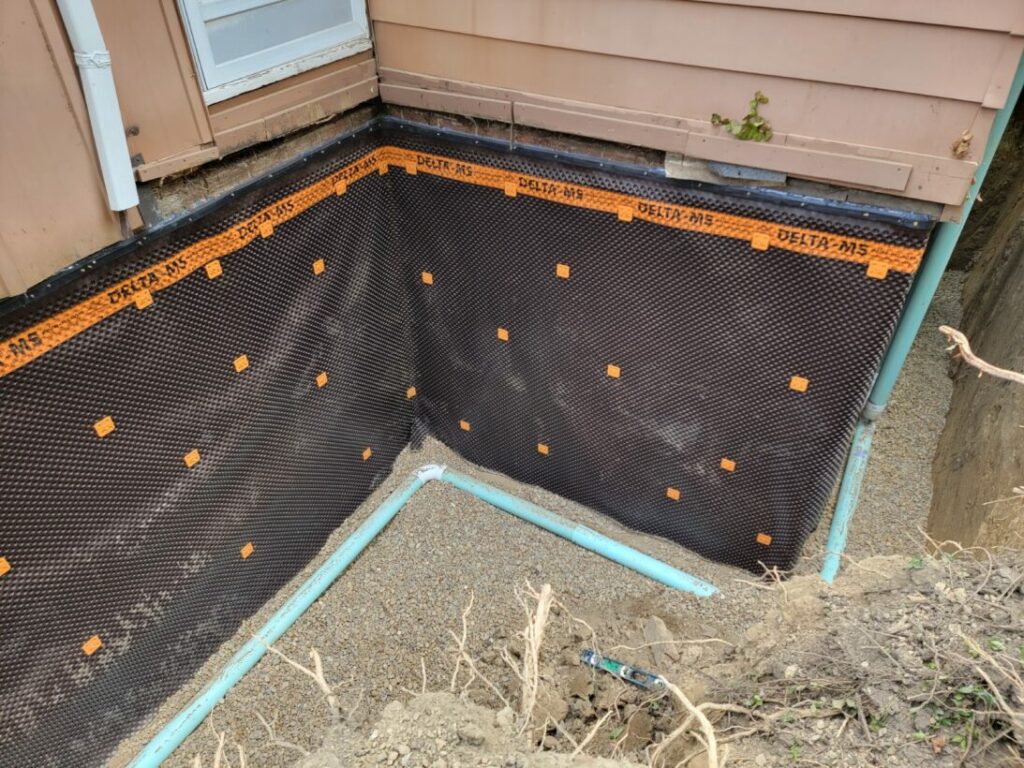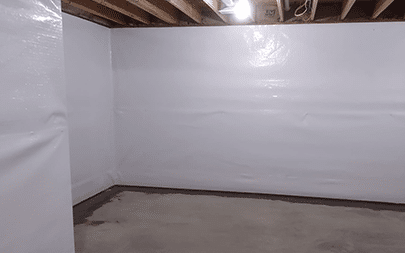Exploring the Various Approaches of Basement Waterproofing and Their Benefits
Cellar waterproofing is crucial for maintaining a steady and dry setting. Numerous methods exist, each with unique benefits. Inside sealants shield versus moisture breach, while outside systems address drainage problems. Sump pumps and French drains pipes take care of water successfully, and dehumidifiers control humidity levels. Recognizing these alternatives can help house owners make notified choices. The appropriate remedy typically depends on certain conditions and demands. What variables should one take into consideration when picking the most effective technique?
Inside Sealants: An Efficient Obstacle Against Wetness
Interior sealers function as an essential line of protection versus wetness invasion in basements. These items are made to produce a water resistant barrier on floorings and wall surfaces, effectively protecting against water from leaking in. Readily available in different forms, including coverings, paints, and sealants, they can fill cracks and pores in concrete, guaranteeing a much more secure environment.The application process commonly involves cleansing the surface areas to remove dirt and debris, followed by the careful application of the sealer. Once healed, these items improve the durability of the basement while decreasing humidity levels, which can cause mold and mildew growth and structural damage.Moreover, interior sealants are frequently easy to apply and can be a cost-effective option for house owners looking to reduce wetness issues. By giving a trusted layer of security, they play an important function in guarding the cellar room, protecting both its honesty and usability.
Outside Waterproofing Equipments: Securing Your Foundation
When home owners seek to shield their structures from water damages, outside waterproofing systems use a durable solution. These systems usually involve applying water resistant membranes and drainage systems to the outside walls of a basement. By producing an obstacle against groundwater, they efficiently prevent wetness from permeating the foundation (Water Solutions).One notable advantage of outside waterproofing is its capacity to resolve the resource of water breach prior to it reaches the inside. This positive technique not just safeguards architectural integrity however likewise enhances the durability of the home.Moreover, exterior systems can improve the total drainage around the foundation, lowering hydrostatic stress. This lessens the chance of fractures and heaving that can result from water accumulation. Because of this, property owners can enjoy a dry, steady cellar atmosphere, significantly boosting building worth and comfort. Ultimately, exterior waterproofing systems are an important investment in keeping a healthy and balanced home foundation
Sump Pumps: Taking Care Of Water Buildup Effectively
Sump pumps play a necessary duty in handling water build-up in basements, providing a reliable service for homes vulnerable to flooding or excess moisture. These devices are installed in sump pits, generally located at the most affordable factor of a cellar, where they gather water that permeates in from the surrounding dirt. When the water level increases, the sump pump triggers, effectively draining the excess water to a marked water drainage area, consequently protecting against possible damage to the structure and interior spaces.There are two major sorts of sump pumps: completely submersible and pedestal. Completely submersible pumps are mounted undersea, making them less visible and usually quieter, while stand pumps are located above the sump pit look here and are simpler to preserve. By successfully handling water build-up, sump pumps not just safeguard against architectural damage but additionally contribute to a much healthier living atmosphere by reducing moisture degrees and preventing mold and mildew growth.
French Drainpipes: Redirecting Water Far From Your Home

Dehumidifiers: Reducing Moisture Levels for a Drier Environment
Basement waterproofing involves different approaches, and dehumidifiers play a significant role in keeping a dry setting. By successfully minimizing moisture levels, dehumidifiers assist avoid dampness accumulation, which can bring about mold growth, architectural damage, and undesirable odors. These devices function by drawing out excess dampness from the air, creating a much healthier and much more comfy space.In addition to enhancing air high quality, dehumidifiers can boost the effectiveness of other waterproofing methods, such as sealing and drainage systems. They aid keep perfect humidity levels, commonly between 30% and 50%, which is vital for preventing condensation on walls and floors.Moreover, modern-day dehumidifiers are energy-efficient and included attributes like programmable settings and automated shut-off, making them user-friendly. Generally, integrating a dehumidifier into basement waterproofing prepares gives a crucial layer of defense versus moisture-related issues, thus safeguarding the home's integrity.
Often Asked Inquiries

Exactly How Lengthy Do Waterproofing Solutions Usually Last?
Waterproofing services normally last in between 5 to twenty Website years, depending upon the technique used, top quality of materials, and ecological problems. Normal maintenance and inspections can aid prolong their effectiveness and general life-span.
Can I Waterproof My Cellar Myself?
The individual considered whether to waterproof the basement independently. They found that while do it yourself alternatives exist, understanding of products and methods is important to ensure effectiveness, and specialist support might provide far better long-term results.
What Are the Indicators of Cellar Moisture Issues?
Signs of cellar dampness concerns include noticeable water spots on wall surfaces, stuffy odors, peeling off paint, mold and mildew growth, and wetness on floors. High moisture levels may also suggest underlying moisture issues calling for focus to stop additional damages.
Just How Much Does Cellar Waterproofing Price?
The expense of basement waterproofing varies widely, typically ranging from $1,500 to $5,000. Variables affecting expenses include the seriousness of wetness problems, the picked technique, and the geographical place of the home.
Will Waterproofing Boost My Home's Worth?
The concern of whether waterproofing boosts a home's value frequently develops among house owners. Typically, efficient waterproofing can boost building charm, mitigate damage threats, and potentially bring about greater resale costs, depending upon the local actual estate market. By producing an obstacle against groundwater, they properly avoid moisture from passing through the foundation.One remarkable advantage of outside waterproofing is its ability to deal with the resource of water breach prior to it gets to the inside. Sump pumps play a vital duty in handling water buildup in basements, providing an effective service for homes susceptible to flooding or excess dampness. When the water degree climbs, the sump pump triggers, efficiently pumping out the excess water to a designated water drainage location, thereby stopping prospective damage to the foundation and interior spaces.There are two primary kinds of sump pumps: completely submersible and pedestal. Exterior Drainage Solutions. By directing groundwater and surface water away from the foundation, French drains pipes aid stop water buildup in cellars and creep rooms, decreasing the risk of architectural damage and mold and mildew growth.Installation normally occurs around the border of the home, making sure that water is effectively diverted. Indicators of cellar moisture problems include visible water stains on wall surfaces, musty odors, peeling off paint, mold and mildew development, and wetness on floorings